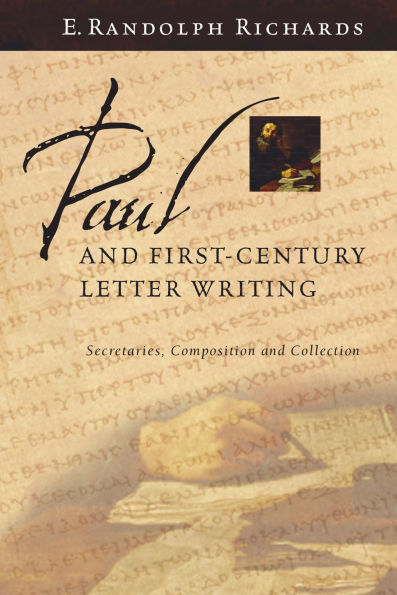Traditional Christian art depicts Paul the letter writer, pen in hand, attentive to the Spirit. We might think we know better and imagine him pacing in agitation as he rapidly dictates to a secretary his letter to the Galatians. But in reality neither of these pictures is accurate.
In Paul's day, producing a letter was a time-consuming and costly business. And we have ample resources from the ancient world to piece together what it must have been like. A secretary was usually part of the picture. But so were notes, drafts, corrections and careful rewrites, not to speak of scratchy pens, sooty ink and coarse papyrus. Interestingly, there is evidence that Paul involved his missionary team in the writing of letters. And then came the delivery over land and sea, the reading and circulation, as well as the epistolary afterlife of copying, collecting and storing.
E. Randolph Richards has extensively studied ancient letter writing and secretaries. Informed by the historical evidence and with a sharp eye for telltale clues in Paul's letters, he takes us into this world and places us on the scene with Paul the letter writer. What first appears to be just a study of secretaries and stationery turns out to be an intriguing glimpse of Paul the letter writer that overthrows our preconceptions and offers a new perspective on how this important portion of Christian Scripture came to be.
Traditional Christian art depicts Paul the letter writer, pen in hand, attentive to the Spirit. We might think we know better and imagine him pacing in agitation as he rapidly dictates to a secretary his letter to the Galatians. But in reality neither of these pictures is accurate.
In Paul's day, producing a letter was a time-consuming and costly business. And we have ample resources from the ancient world to piece together what it must have been like. A secretary was usually part of the picture. But so were notes, drafts, corrections and careful rewrites, not to speak of scratchy pens, sooty ink and coarse papyrus. Interestingly, there is evidence that Paul involved his missionary team in the writing of letters. And then came the delivery over land and sea, the reading and circulation, as well as the epistolary afterlife of copying, collecting and storing.
E. Randolph Richards has extensively studied ancient letter writing and secretaries. Informed by the historical evidence and with a sharp eye for telltale clues in Paul's letters, he takes us into this world and places us on the scene with Paul the letter writer. What first appears to be just a study of secretaries and stationery turns out to be an intriguing glimpse of Paul the letter writer that overthrows our preconceptions and offers a new perspective on how this important portion of Christian Scripture came to be.

Paul and First-Century Letter Writing: Secretaries, Composition and Collection
252
Paul and First-Century Letter Writing: Secretaries, Composition and Collection
252Related collections and offers

Product Details
| ISBN-13: | 9781514015056 |
|---|---|
| Publisher: | IVP Academic |
| Publication date: | 07/29/2025 |
| Sold by: | Bookwire |
| Format: | eBook |
| Pages: | 252 |
| File size: | 5 MB |
